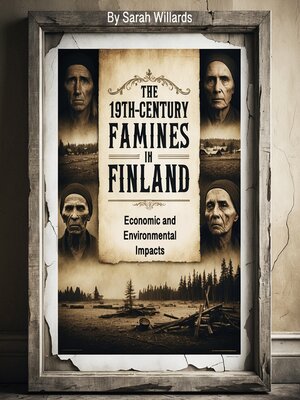The 19th-Century Famines in Finland
audiobook (Unabridged) ∣ Economic and Environmental Impacts
By Sarah Willards

Sign up to save your library
With an OverDrive account, you can save your favorite libraries for at-a-glance information about availability. Find out more about OverDrive accounts.
Find this title in Libby, the library reading app by OverDrive.



Search for a digital library with this title
Title found at these libraries:
| Library Name | Distance |
|---|---|
| Loading... |
In the 19th century, Finland was a region undergoing profound political, social, and economic transformation. Following centuries of Swedish rule, Finland was ceded to the Russian Empire in 1809, becoming an autonomous Grand Duchy under the Russian crown. This shift in governance marked a significant turning point in the nation's development, as it introduced new administrative structures and a degree of self-rule, yet still tied Finland's fate closely to the broader political currents of imperial Russia. Despite this autonomy, many rural communities remained deeply influenced by traditional practices rooted in earlier Swedish governance and local customs.
Agriculture formed the backbone of the Finnish economy during this period, with the vast majority of the population engaged in farming or forestry. The rural landscape was dominated by small farms and tenant holdings, where subsistence farming was the norm. Crops such as rye, barley, and oats were staples, but yields were highly susceptible to environmental fluctuations. There was limited access to modern tools, techniques, or fertilizers, and storage methods were often inadequate, leaving communities vulnerable to failed harvests. The lack of agricultural diversity and technological stagnation only exacerbated the risks, particularly during years of poor weather or early frosts.
Economically, Finland was still in the early stages of development, with only a few urban centers and a limited industrial base. Trade remained modest, and most commerce was localized. The transportation infrastructure, particularly in the countryside, was underdeveloped, which made the movement of goods—especially food—slow and unreliable. The country's dependence on its immediate environment for food and income meant that any disruption, whether climatic or political, could have devastating consequences. This fragility was compounded by population growth, which put increasing pressure on available land and resources.







